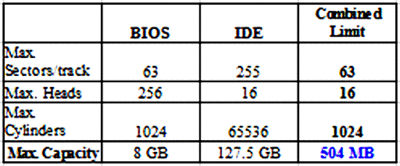386SX wrote on 2020-06-17, 16:01:Hi,
I have a genuine floppy version of Dos 6.20 with original papers and box and I was expecting it may be so old to have proble […]
Show full quote
Hi,
I have a genuine floppy version of Dos 6.20 with original papers and box and I was expecting it may be so old to have problem reading it. The first two floppies I got somehow after many times to install while the third disk seems in bad shape and at the end of the installation I've to leave some files not installed to end up the installation.
At the reboot the pc seems to stop at the "MS DOS 6.2 starting". Can this be related to the third floppy or even the first ones may have had problems? Certainly every floppy has some problems here but I was hoping maybe some software may help or I could install from the files directly on the disk itself or whatever.
The disk is a Seagate ST3660 540MB.
Also I'd like to ask a thing: I tried the installation using a more modern P4/i865PE mobo but the disk will go into a 386 machine which bios has the option to insert the disk config that is 1057 cyl, 16 heads, 63 sector, but I don't understand why it say 520MB instead of 540MB? Also what about the limitation that should be 1024 cyl of Dos? Should I configure it for LBA with a different configuration?
Thanks
386 BIOSes usually are using CHS only, unless they are more recent BIOSes for 386/486DLC hybrid mainboards.
Traditionally, the BIOS accepts CHS in this way.. Cylinders 0-1023, Heads 0-15, Sectors 1-63
- Edit: What the CMOS Setup Utility accepts has no relationship to internal limits of the BIOS (you can enter any bogus values).
So if you want to be on the safe side, clear your HDD with S0KILL and enter 1023 cylinders, 15 Heads (16 may also work) and 63 sectors and re-install DOS..
This settings will give a few megabytes less, but should be trouble free.
Alternatively, use "Large" or "ECHS" settings in BIOS, if available.
As a last resort, you can also try a Dynamic Drive Overlay (DDO), such as EZ-Drive.
Re: 512mb CF card cylinder values ?
Re: IDE to Compact Flash as MS-DOS boot drive.
Edit: If you consider hardware solutions, too, have a look at XT-IDE Universal BIOS. It can be installed on network cards.
Or use some of these Year 2000 cards with EPROM chips. Some may contain a HDD BIOS in a similar fashion to these "IDE Enhancer" cards: Re: Help Flashing XTIDE Universal bios
Or use an IDE caching controller. It has a HDD BIOS of its own, too.
Edit: Also interesting is an older thread with links about early IDE/ATA disks.
Re: ide to usb adapter
In essence, logical CHS was used before LBA:
"The solution was sector translation: the drive "lies" to the controller,
acting as if it has, say, 10 heads and 1024 cylinders when it actually has 5 heads and 2048 cylinders.
As long as the total space is correct, the BIOS can't tell the difference and there is no need for driver software.
A more advanced form of sector translation allows drive manufacturers to put extra sectors on the outer tracks
(which have more room) but still juggles the extra space back into simple terms that the BIOS can understand.
Nearly all drives over about 60Mb use sector translation."
Source: http://redhill.net.au/o/glos2.html#sectrans
That being said, the PC was not the only platform using IDE/AT-Bus HDDs..
On other platforms, the usual PC BIOS limits didn't exist, so could actually enter values like 1057 cylinders, 16 heads, 63 sector.. 😉
"Time, it seems, doesn't flow. For some it's fast, for some it's slow.
In what to one race is no time at all, another race can rise and fall..." - The Minstrel
//My video channel//
